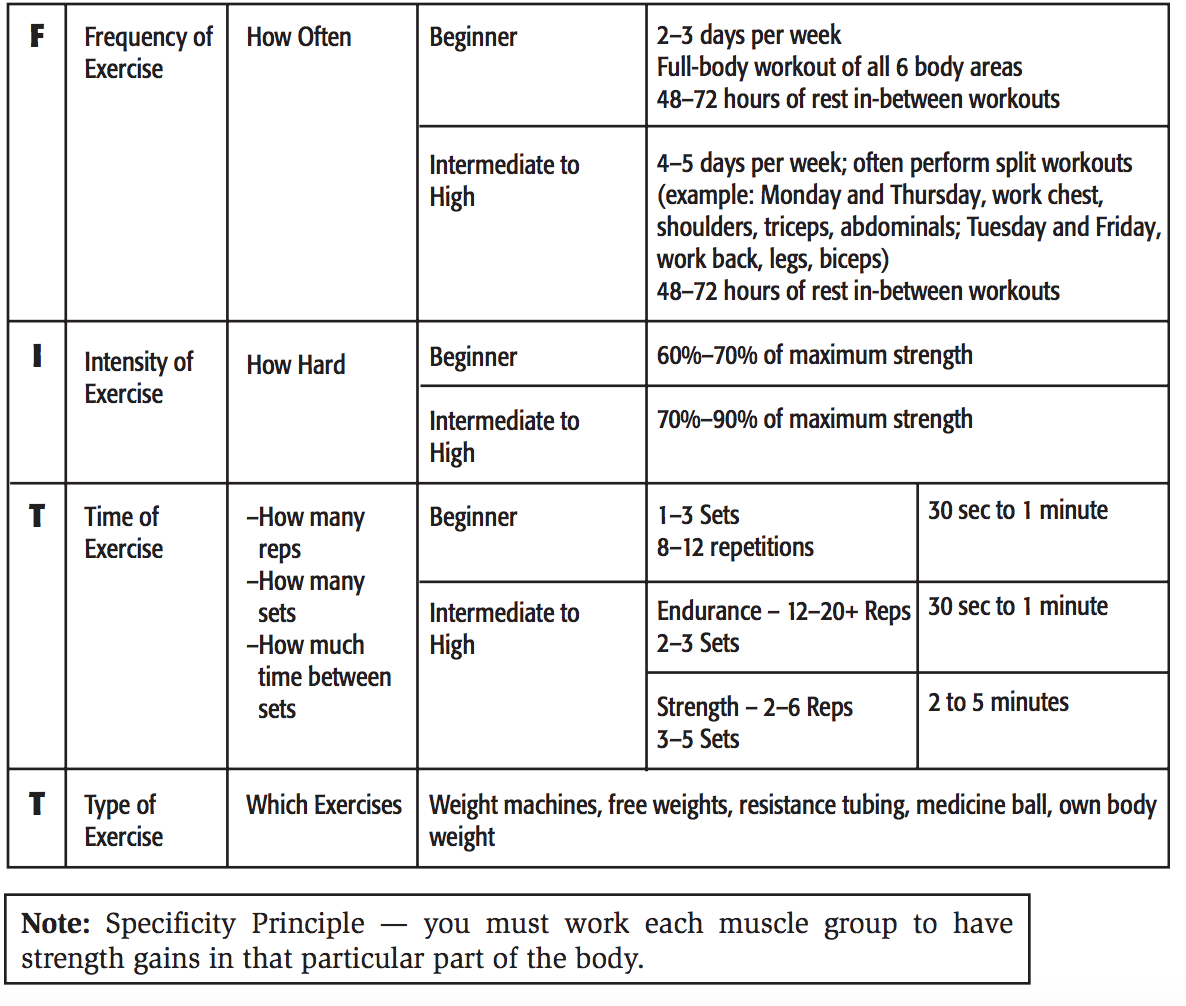74 Resistance Exercise Programming
Dawn Markell and Diane Peterson
Designing a resistance exercise program can seem like a daunting task. However, the basics are very simple. The table below provides instructions for designing an effective resistance exercise program.
Resistance Exercise Program

Recommendations for Resistance Training Exercise
- Perform a minimum of 8 to 10 exercises that train the major muscle groups.
- Workouts should not be too long. Programs longer than one hour are associated with higher dropout rates.
- Choose more compound, or multi-joint exercises, which involve more muscles with fewer exercises.
- Perform one set of 8 to 12 repetitions to the point of fatigue.
-
- More sets may elicit slightly greater strength gains, but additional improvement is relatively small.
- Perform exercises at least 2 days per week.
- More frequent training may elicit slightly greater strength gains, but additional improvement is relatively small since progress is made during the recuperation between workouts.
- Perform exercises using proper form.
- Perform exercises through a full range of motion.
- Elderly trainees should perform the exercises in the maximum range of motion that does not elicit pain or discomfort.
- Perform exercises in a controlled manner.
- Maintain a normal breathing pattern or breathe out during the power phase of the exercise.
- If possible, exercise with a training partner.
- Partners can provide feedback, assistance, and motivation.
Position Stand on Progression Models in Resistance Training for Healthy Adults2
- Utilize both concentric and eccentric muscle actions.
- Utilize single and multiple joint exercises.
- Exercise sequence:
- large before small muscle group exercises
- multiple-joint exercises before single-joint exercises
- higher intensity before lower intensity exercises
- When training at a specific load:
- 2-10% increase in load if one to two repetitions over the desired number
- Training frequency:
- 2-3 days per week for novice and intermediate training
- 4-5 days per week for advanced training
- Novice training:
- 8-12 repetition maximum (RM)
- Intermediate to advanced training:
- 1-12 RM using periodization* (strategic implementation of specific training phases alternating between phases of stress and phases of rest)
- eventual emphasis on heavy loading (1-6 RM)
- at least 3-min rest periods between sets
- moderate contraction velocity
- 1-2 s concentric, 1-2 s eccentric
- Power training (two general loading strategies):
- Strength training
- use of light loads
- 30-60% of 1 RM
- fast contraction velocity
- 2-3 min of rest between sets for multiple sets per exercise
- emphasize multiple-joint exercises especially those involving the total body
- Strength training
-
- Local muscular endurance training
- light to moderate loads
- 40-60% of 1 RM
- high repetitions (> 15)
- short rest periods (< 90 seconds)
- Local muscular endurance training
Recommendations should be viewed within the context of an individual’s target goals, physical capacity, and training status.
For more information on using periodization for weight training, click on the link below:
Dawn Markell & Diane Peterson, Health and Fitness for Life. MHCC Library Press. Sept 4, 2019. https://mhcc.pressbooks.pub/hpe295

